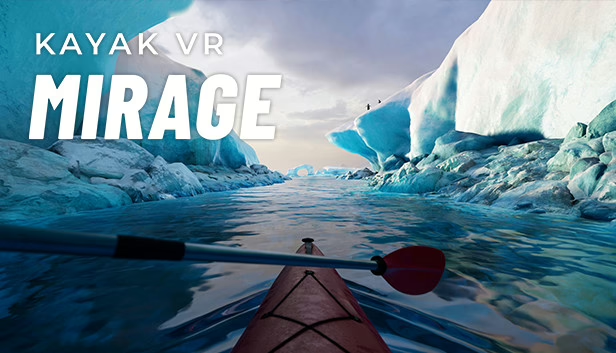Kayak VR: Mirage is a jaw-dropping and exhilarating journey through beautiful and unique locations, tailor-made for Virtual Reality. Maneuver our fully physically accurate kayak around checkpoints and crown yourself the fastest, or take it easy and use the free roam mode for a leisurely trip and enjoy the scenery.
From the product description
About the Experience
Kayaking is a great activity if you like to explore nature through its waterways. I’ve been able to go a few times and it’s always a peaceful way to spend a day. It’s also an easier activity than some outdoor sports with less chance of getting lost (as long as you stay on said waterway…). The challenge is getting to the beautiful wilderness areas, putting in, taking out, and finding your way back to your vehicle afterwards. This makes it easier to do on a lake, but of course that’s not nearly as satisfying.
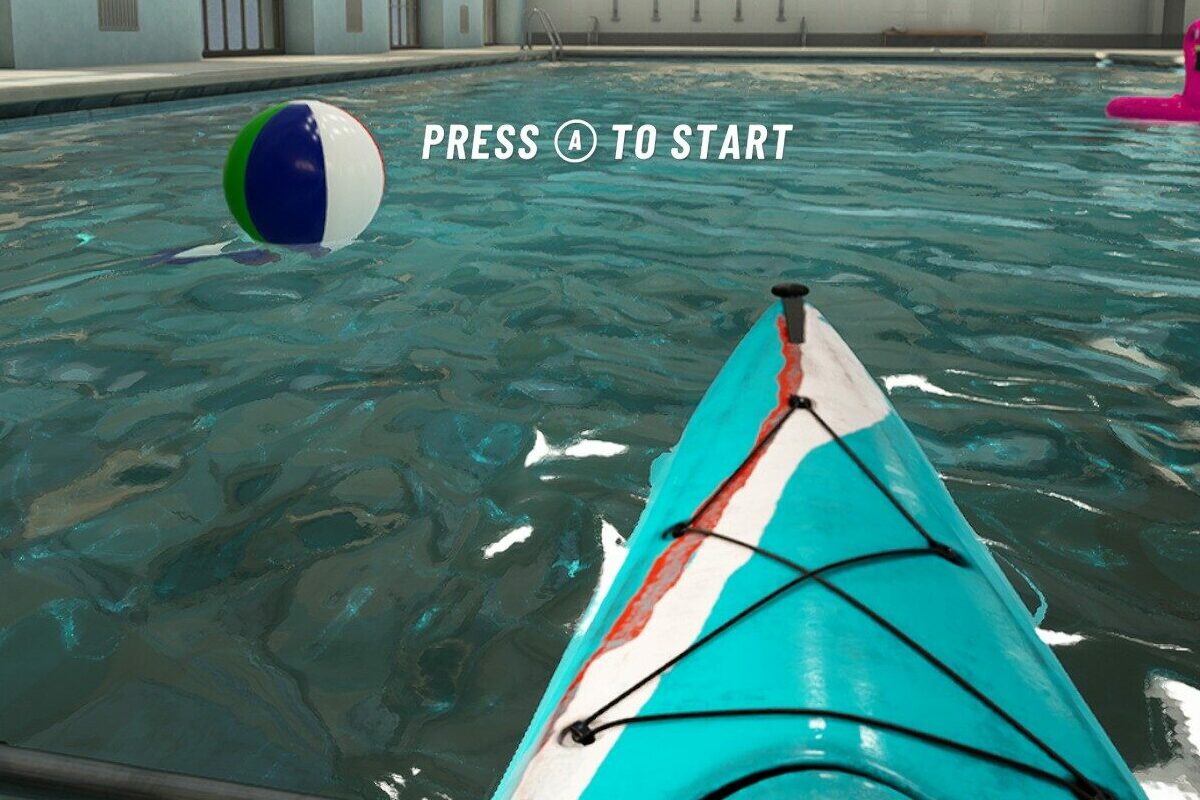
Kayak VR: Mirage is new way to experience a ride down a river without the there-and-back travel and without the potential waterlogging. Though it has gaming elements by virtue of racing and timers, it can also be enjoyed completely as a peaceful “free roam” experience that you can take at your own pace. You can choose from different locations, weather, and boats to really go for the trip you want to take. You can also make it your own through customization of your kayak, paddles, and headgear.
The product description specifically brags about their “physics-based kayaking” and the hard work shows. Water is surprisingly difficult to model in software so there are always shortcuts that break the effect. Here though, the developers chose to prioritize the water since it’s such a core aspect of the experience and it really shows. Other than the expected real-virtual disconnect, the water flows, bobs, and refracts light as it should. Looking under the waves is a treat. Not only does it cause the distortion you expect it to, but it’s also worth it just to admire the plants, rocks, and marine life teeming beneath the surface.
With all of these amazing features, it would be easy to believe it might be too real to be fun for everyone, but they clearly put much work into providing an experience that would appeal to both VR beginners and old-timers. Read more on this in the Comfort section below.
Graphics and Sound
The graphics are what make the experience next level. Everywhere you look you see natural beauty. From the valley walls to the rippling water to the lovely sky, you can really feel like you’re paddling down the wilderness by yourself. The terrain is absolutely gorgeous, the skies are lovely, and water ripples and teams with marine life.
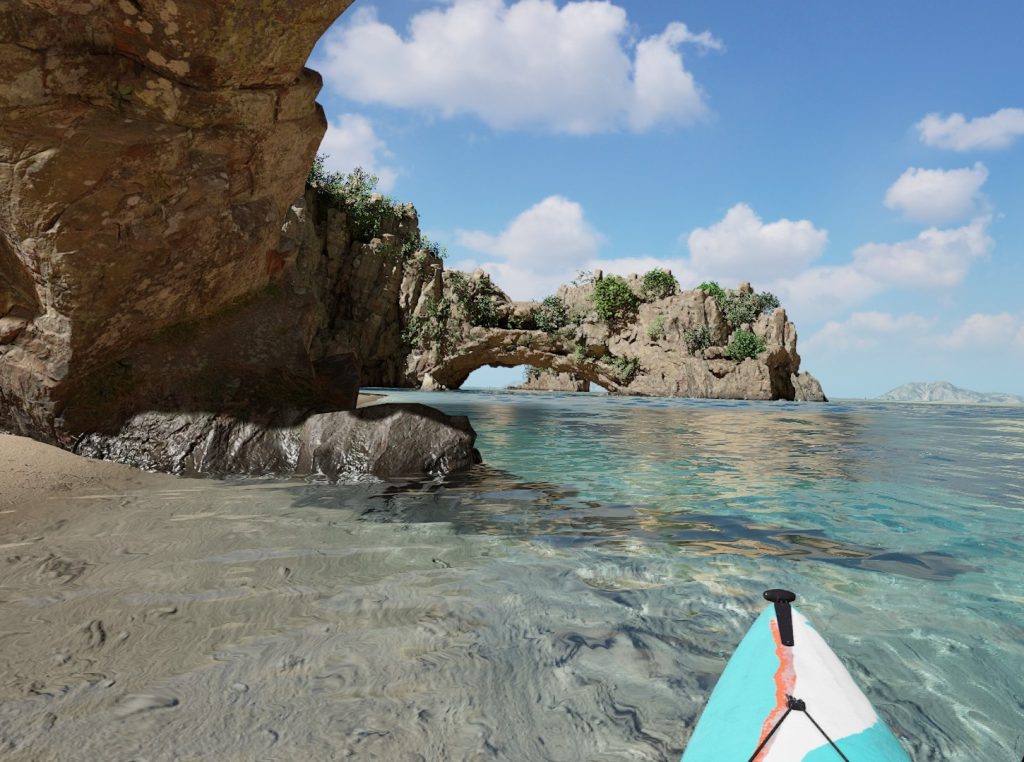
There are only a few other non-game VR experiences for kayaking (although keep an eye out for Whitewater VR: Extreme Kayaking Adventure, a very strong looking competitor releasing soon). The most popular current one is probably National Geographic Explore, but they only use kayaking in one part of the app. Mirage is the first app to really go all out on the hydro realism. It’s one thing to get some semi-natural bobbing going on. It’s considerably more work to model the water to this level of realism. The upcoming Subside also seems to be chasing this crown, but it seems to be focused more underwater than on the surface.
Despite the huge focus on realism and immersion, the developers did a good job of enabling it to run on a variety of system configurations. If you don’t have the latest and greatest video card, there’s a great chance you’ll still be able to tune the dials a bit to get good results. With standalone headsets like the Quest, developers know exactly what the specs are and can take advantage of them consistently. On the other hand, PCVR apps (like this one) run on desktop PCs with a huge range of capabilities. Being able to cut back on some of the detail when needed is critical to attracting the widest variety of users to be successful.
Along with the great visuals, there’s realistic ambient sounds and a great soundtrack. Not much else to say here, but you can adjust the volume of the music versus the sound effects or disable it completely for a more authentic experience.
Information Content
Not applicable
Navigation and Interactivity
The in-game menus are intuitive and provide a good number of options to customize things to your liking. The primary interface for controlling the kayak is simply holding your controllers out to the sides as the paddle handles. You can also take it a bit further though with a custom accessory. Just recently we reviewed the ZyberVR Quest 3 Multipurpose 3-in-1 Sticks that can provide a fixed paddle-like grip that both controllers snap into. If you’ve got a Quest 3, these might just be for you! Just make sure to make the appropriate choice in the options menu.
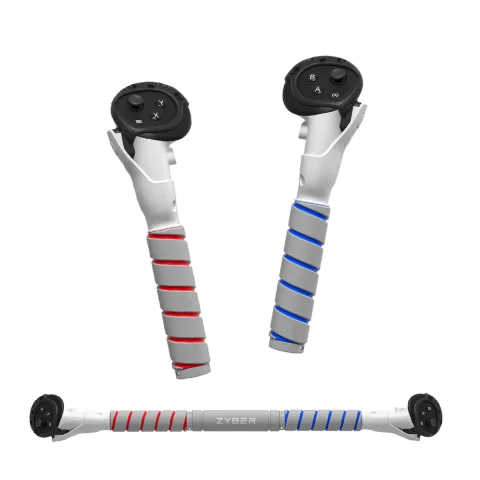
The extensive menus let you choose between different locations, times of day, and weather. You can also return to the pool any time if you just want something calmer!
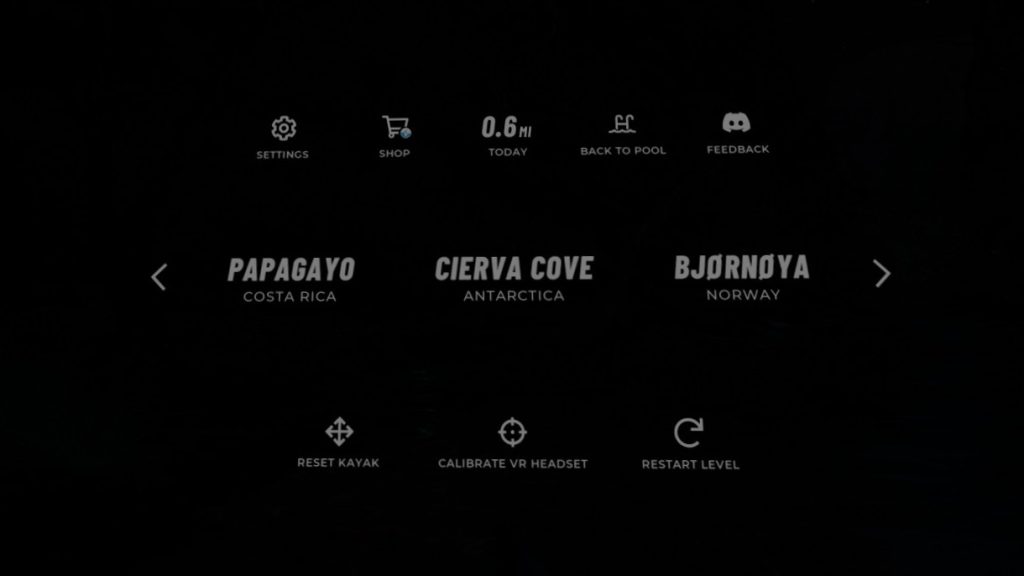
Comfort
VR Voyaging has published several articles about the user experience of VR and how to make great apps for everyone. Many apps don’t even hit the minimum level of accessibility by offering teleport vs smooth locomotion. Mirage takes it considerably further with a whole raft (ha!) of options. Since kayaking would definitely lose something if you could just teleport down the stream, the developers recognize that the flow of the water, the bobbing, and the shifting of the kayak as you paddle could make people feel sick in VR.
To this end, there are settings for stabilizing the kayak that ensure that you stay a little or a lot more stabilized. There’s also the fact that ignoring everything else, there’s an expectation that your head should move in the direction of the boat’s travel. Giving you settings here makes that much more comfortable.
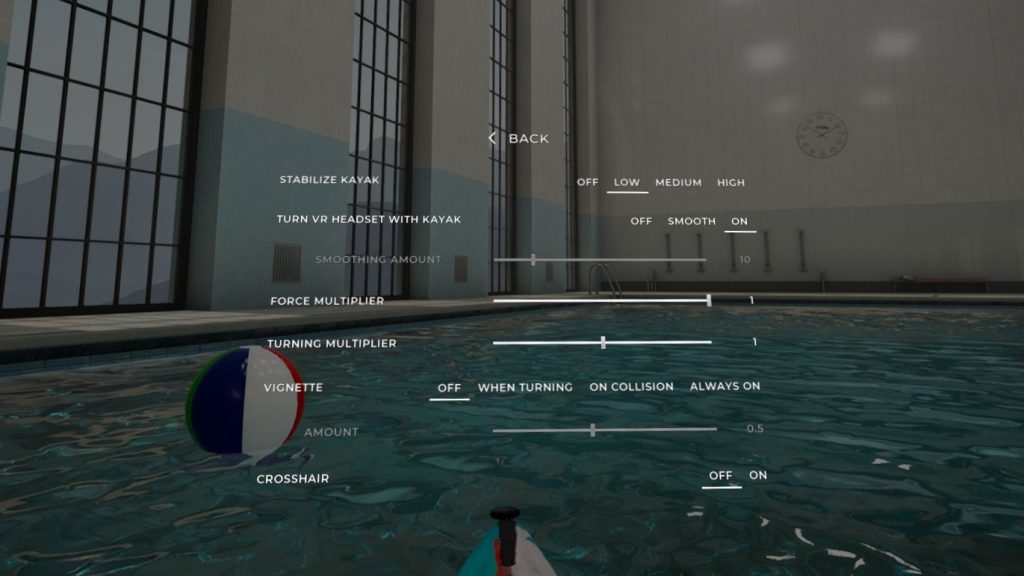
Updates and Support
The developers have put out several updates since initial release for both bug fixes and new content.
Summary
We can’t recommend this enough. It looks gorgeous, feels realistic, and has a variety of locations, weather, and effects to keep it exciting. It will be interesting to see how the playing field changes with the upcoming Whitewater, but for now Mirage is securely the leader.
Pros
- Beautiful graphics
- Realistic physics-based water effects
- Terrain that will transport you around the world
Cons
- Tons of options are great to fine tune things, but can be overwhelming
